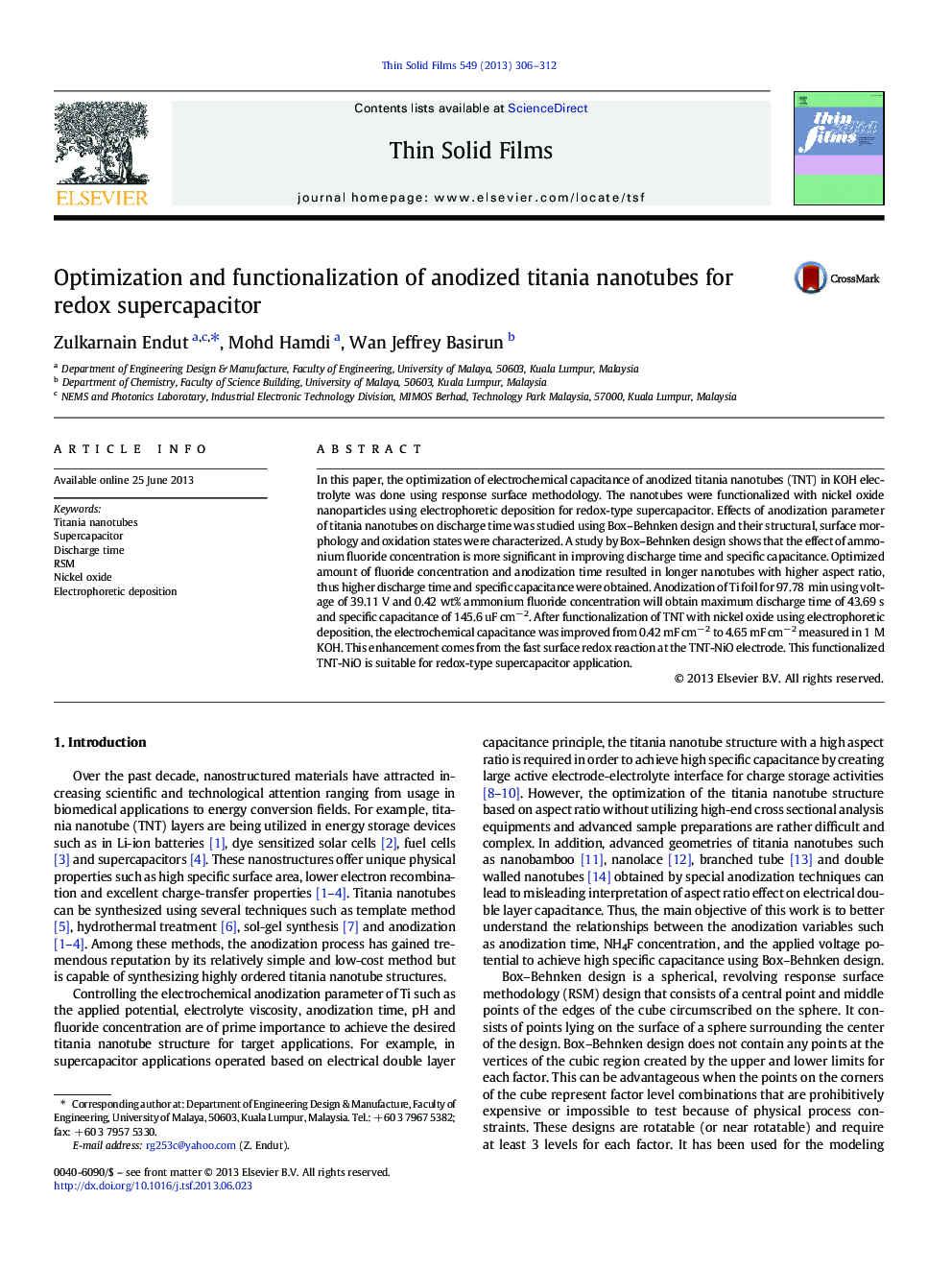| Article ID | Journal | Published Year | Pages | File Type |
|---|---|---|---|---|
| 1665766 | Thin Solid Films | 2013 | 7 Pages |
•Titania nanotubes were synthesized via anodization method for supercapacitor application.•Box–Behnken optimization design improve discharge time of titania nanotubes.•Functionalization of TNT with nickel oxide using EPD improved the electrochemical capacitance.•Storage mechanism had changed from electrical double layer to fast surface redox reaction.•This TNT-NiO electrode is suitable for redox-supercapacitor application.
In this paper, the optimization of electrochemical capacitance of anodized titania nanotubes (TNT) in KOH electrolyte was done using response surface methodology. The nanotubes were functionalized with nickel oxide nanoparticles using electrophoretic deposition for redox-type supercapacitor. Effects of anodization parameter of titania nanotubes on discharge time was studied using Box–Behnken design and their structural, surface morphology and oxidation states were characterized. A study by Box–Behnken design shows that the effect of ammonium fluoride concentration is more significant in improving discharge time and specific capacitance. Optimized amount of fluoride concentration and anodization time resulted in longer nanotubes with higher aspect ratio, thus higher discharge time and specific capacitance were obtained. Anodization of Ti foil for 97.78 min using voltage of 39.11 V and 0.42 wt% ammonium fluoride concentration will obtain maximum discharge time of 43.69 s and specific capacitance of 145.6 uF cm− 2. After functionalization of TNT with nickel oxide using electrophoretic deposition, the electrochemical capacitance was improved from 0.42 mF cm− 2 to 4.65 mF cm− 2 measured in 1 M KOH. This enhancement comes from the fast surface redox reaction at the TNT-NiO electrode. This functionalized TNT-NiO is suitable for redox-type supercapacitor application.
